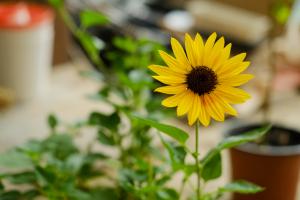Why Do Planting Pots Have Holes
Planting pots are an essential tool for gardeners and plant enthusiasts all around the world. The various shapes and sizes of planting pots make them versatile and convenient to use for a wide range of plants. One of the most common features of planting pots is the presence of holes at the bottom. In this article, we will explore the reasons why planting pots have holes.
Aeration and Drainage
The most significant reason for having holes at the bottom of planting pots is to provide adequate airflow and drainage for the plants. Without sufficient aeration and drainage, the plant's roots may become waterlogged and suffer from root rot, which can lead to the plant's death. When excess water accumulates in the pot, the holes will allow it to drain out, preventing damage to the plant's roots.
Furthermore, having holes at the bottom of planting pots allows air to circulate through the soil. This process encourages the growth of beneficial microorganisms that are crucial to plant health. Aeration also helps to maintain the soil's structure by preventing compaction, which can reduce the plant's access to water and nutrients.
Preventing Overwatering
Overwatering is one of the most common mistakes made by novice gardeners. When plants are overwatered, they may suffer from mold growth, root rot, and nutrient deficiencies. Planting pots with holes at the bottom can help prevent overwatering by allowing excess water to escape from the pot. This feature promotes healthy plant growth by preventing moisture from accumulating in the soil and reducing the risk of disease.
Root Growth and Development
Plants require adequate space for their roots to grow and develop. Planting pots with holes at the bottom allow the roots to grow freely and will prevent them from becoming root-bound. When the roots become too long, they can grow out of the drainage holes and continue to expand in the surrounding soil.
Moreover, when the roots reach the pot's bottom, they can absorb the nutrients that have accumulated in the drainage dish, promoting healthy growth and development.
Conclusion
Overall, having holes at the bottom of planting pots is crucial for plant health, root growth, and development. It facilitates soil aeration, drainage, and prevents overwatering, which can lead to mold, root rot, and nutrient deficiencies. Proper drainage ensures that the plants have enough oxygen and sufficient space for their roots to grow healthily. By using planting pots with holes at the bottom, gardeners can provide optimal growing conditions for their plants, leading to lush and healthy vegetation.

 how many times do yo...
how many times do yo... how many planted tre...
how many planted tre... how many pine trees ...
how many pine trees ... how many pecan trees...
how many pecan trees... how many plants comp...
how many plants comp... how many plants can ...
how many plants can ... how many plants and ...
how many plants and ... how many pepper plan...
how many pepper plan...































